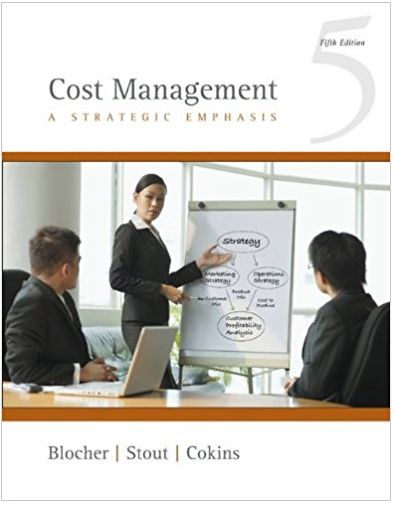Question
Lynda is a manager of an investment center. Her division has been performing below expectations recently because one of its larger projects has not been
Lynda is a manager of an investment center. Her division has been performing below expectations recently because one of its larger projects has not been as successful as anticipated.
Given the poor performance of her division, Lynda is facing pressure to improve her results. In particular, Lynda has been informed that her division's ROI (which was only about 9% last year) must improve significantly in order for her to retain her position as manager.
If Lynda does not make any changes, she believes next year's performance will be similar to the previous year. Specifically, Lynda's division will have a net asset base of $530,000 and expected operating income of $47,700.
While evaluating how to proceed, Lynda determines that discontinuing any of the ongoing projects is not a viable option. She discovers, however, the opportunity to invest in two additional, independent projects. Both potential projects will only last one year and any assets purchased with the initial outlay are expected to have zero salvage value at the end of the year. Specific details regarding each project follow:
Project 1
Project 2
Initial Outlay
$600,000
$100,000
Expected Operating Income
$78,000
$20,000
Lynda is allowed complete autonomy over which projects her division invests in.
Requirements start in the next page
Problem 3 - Part A (5 points)
Assuming an expected rate of return of 14%, which project(s) (if any) would the firm's shareholders want Lynda to invest in? Why?
Problem 3 - Part B (5 points)
Assuming that Lynda is evaluated based on Return on Investment (ROI), which project(s) (if any) would Lynda choose to invest in? Why?
Problem 3 - Part C (5 points)
Does the use of ROI as a performance measure in this situation lead to over-investment, under-investment, or goal congruence? Explain conceptually why this is the case.
Step by Step Solution
There are 3 Steps involved in it
Step: 1
Problem 3 Part A 5 points Assuming an expected rate of return of 14 the firms shareholders would want Lynda to invest in both Project 1 and Project 2 ...
Get Instant Access to Expert-Tailored Solutions
See step-by-step solutions with expert insights and AI powered tools for academic success
Step: 2

Step: 3

Ace Your Homework with AI
Get the answers you need in no time with our AI-driven, step-by-step assistance
Get Started


